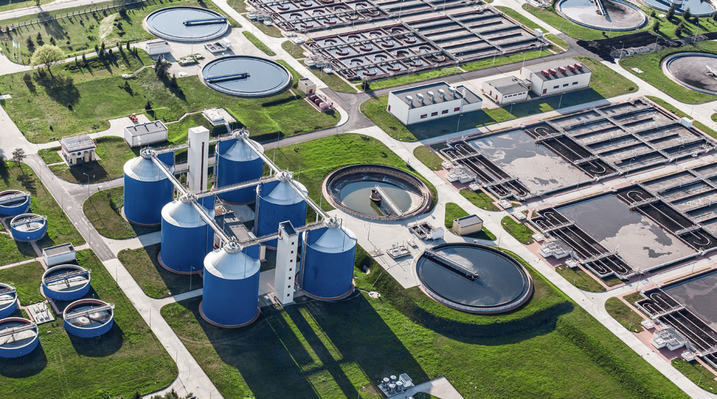
Within the modern environmental panorama, wastewater remedy stands as a cornerstone of sustainable water administration. The combination of superior strategies like reverse osmosis and seawater desalination represents a major development on this discipline, addressing the rising considerations of water shortage and air pollution.
The Vital Position of Reverse Osmosis in Wastewater Therapy
Rules of Reverse Osmosis
Reverse osmosis operates on the precept of utilizing a semi-permeable membrane to filter out impurities from water. This course of is paramount in purifying wastewater, rendering it appropriate for quite a lot of functions, starting from agricultural irrigation to industrial processes.
Advantages of Reverse Osmosis in Wastewater Therapy
- Environment friendly Contaminant Elimination: Able to eliminating various pollution, together with microorganisms, heavy metals, and chemical contaminants.
- Water Conservation: Facilitates water recycling, lowering the dependence on freshwater sources.
- Enhanced Water High quality: Ensures the manufacturing of high-purity water, assembly stringent high quality requirements.
Seawater Desalination: A Answer to World Water Scarcity
Seawater desalination emerges as an important expertise in areas troubled by freshwater shortage. It includes extracting freshwater from seawater, thereby offering a dependable supply of potable water.
Desalination Strategies
- Thermal Desalination: Makes use of warmth to evaporate seawater, condensing the vapor into freshwater.
- Membrane-Primarily based Desalination: Employs reverse osmosis for environment friendly and cost-effective desalination.
Learn: Water Stress: A Global Problem That’s Getting Worse
Synergy of Reverse Osmosis and Seawater Desalination
Enhanced Water Therapy Efficacy
The mixture of reverse osmosis with seawater desalination provides quite a few benefits, together with improved vitality effectivity, elevated water manufacturing charges, and diminished environmental impacts, notably when it comes to brine disposal.
Complete Wastewater Therapy Course of
From Inception to Reuse
- Preliminary Therapy: Screening and grit removing.
- Main Part: Natural strong separation in settling tanks.
- Organic Therapy: Microbial degradation of natural content material.
- Reverse Osmosis Stage: Excessive-efficiency filtration for high quality contaminants.
- Desalination (if relevant): Elimination of salts and minerals.
- Superior Tertiary Processes: Additional purification, together with UV disinfection.
- Remaining Steps: Secure discharge or repurposing in numerous sectors.
Environmental and Public Well being Impacts
Sustainable Practices and Advantages
- Diminished reliance on chemical therapies in each RO and desalination.
- Implementation of energy-efficient methods, doubtlessly powered by renewable sources.
- Alleviation of water shortage by means of efficient desalination strategies.
Public Well being Enhancements
- Provision of persistently secure, clear water.
- Preservation and safety of pure ecosystems.
- Prevention of waterborne illnesses, making certain group well being and well-being.
Learn: A Cornerstone Technology in The Quest For Pristine Water Quality
The Future Panorama of Wastewater Therapy
Embracing Innovation and Effectivity
Future developments in wastewater remedy are anticipated to concentrate on optimizing vitality consumption, growing water restoration charges, and lowering ecological footprints. Improvements might embody the event of extra environment friendly membrane supplies for reverse osmosis, the mixing of renewable vitality sources, and the exploration of recent desalination applied sciences.
Superior Wastewater Therapy Applied sciences
Reducing-Edge Developments
- Nanofiltration: An extension of reverse osmosis, using nanotechnology for even finer filtration, focusing on particular contaminants.
- Electrodialysis Reversal (EDR): A course of complementary to RO, utilizing electrical fields to separate charged particles, excellent for various salinity ranges.
- Zero Liquid Discharge (ZLD) Techniques: Purpose to eradicate wastewater discharge totally, recovering precious assets and minimizing environmental affect.
Group and Trade Functions
Numerous Utilization of Handled Water
- Agricultural Irrigation: Utilizing handled wastewater for irrigation, particularly in arid areas.
- Industrial Functions: Using high-purity water in processes comparable to manufacturing and cooling.
- City Landscaping and Leisure Use: Using handled water for municipal landscaping, lowering the demand on potable water sources.
World Influence and Coverage Implications
Worldwide Significance
The appliance of superior wastewater remedy applied sciences, particularly reverse osmosis and seawater desalination, is more and more acknowledged globally as important for sustainable water administration. This recognition is driving coverage adjustments and investments in water infrastructure throughout numerous areas.
Coverage and Regulation
- Requirements and Tips: Establishing stringent rules for water high quality and remedy processes.
- Incentives for Sustainable Practices: Encouraging the adoption of environment friendly and eco-friendly water remedy applied sciences.
- Worldwide Collaboration: Sharing information and assets to handle world water challenges.
Learn: Common Mistakes to Avoid in Water Purification: Precautions to Take
Conclusion
The development of wastewater remedy by means of reverse osmosis and seawater desalination is pivotal in tackling the twin challenges of water shortage and environmental sustainability. As we proceed to innovate and implement these applied sciences, we pave the best way for a future the place clear, secure water is accessible for all, making certain a more healthy planet for generations to return.
Trending Merchandise











